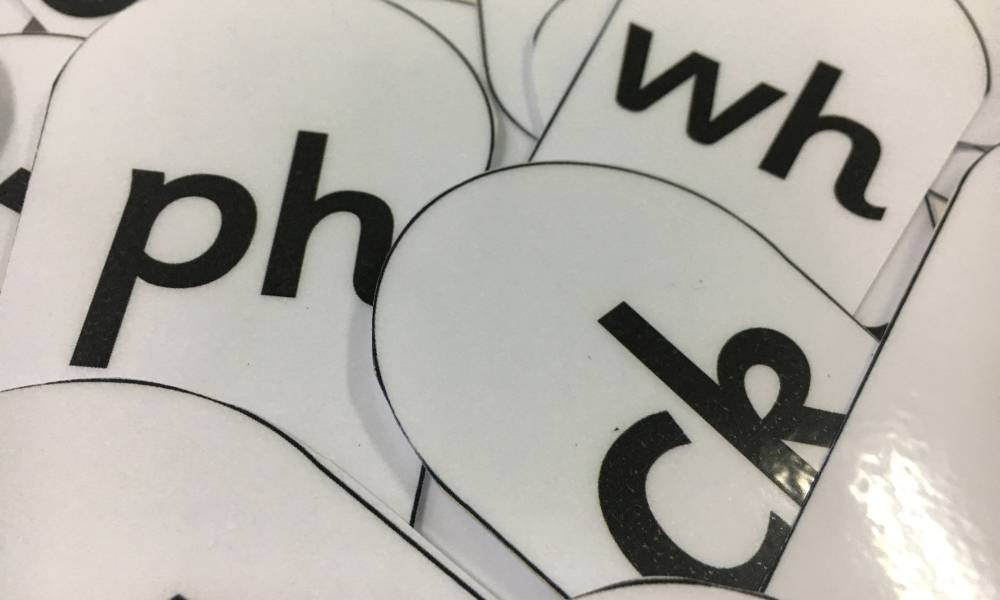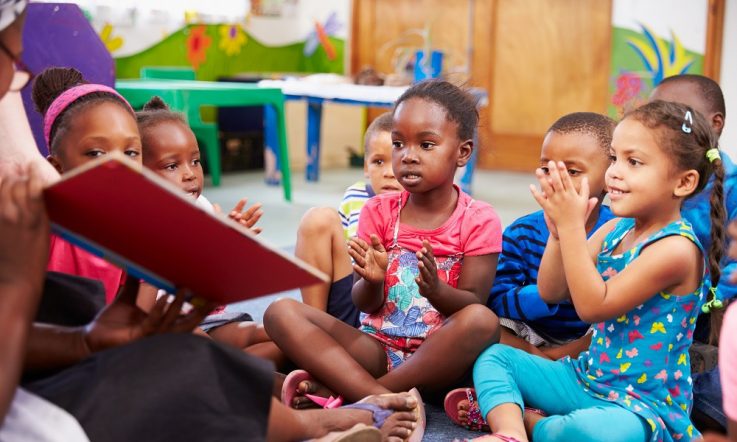Hello and thank you for downloading this School Improvement podcast from Teacher magazine, I'm Rebecca Vukovic.
As the name suggests, ‘foundation skills' are crucial to future learning. The Association of Independent Schools New South Wales (AISNSW) has been working with 38 of its schools on a targeted early years program that aims to help students in Kindergarten to Year 2 master key literacy and numeracy skills. The initiative has been led by the association's Head of Student Services, Lisa Ridings. She joins me now to share what's been happening in the program and the impact it's already having. Lisa, welcome to Teacher magazine.
Lisa Ridings: Thanks for having me.
Rebecca Vukovic: We'll spend some time talking about the skills and picking apart the different interventions and strategies, as well as the results so far, but I want to start by setting the scene. This is the Phase 2 NSW Literacy and Numeracy Action Plan, how did it come about?
LR: So, the Phase 2 Action Plan is a four-year cross sectoral initiative of the New South Wales Government to really impact on student literacy and numeracy outcomes. The evaluation of the Phase 1 Action Plan identified a clear focus of instructional leadership, supported by diagnostic assessment, tiered interventions and differentiated teaching. So, as part of the Phase 2 Action Plan, these are the specified priority areas.
The Phase 2 Action Plan is a four-year opportunity to make sure that all students are equipped with those necessary foundational literacy and numeracy skills, after their first three years of schooling and so in NSW, that is Kindergarten to Year 2. The schools participating in the initiative were drawn from low-SES (socioeconomic status) areas and selected according to a criteria set by the NSW Government. They represent regional and urban, small and large schools and, as well, there are schools who have a high proportion of students from an Aboriginal or Torres Strait Islander background, or have large communities of students who speak English as an Additional Language or Dialect (EAL/D). The evaluation of the initiative is thorough and it involves the three sectors and includes a range of measures across both the targeted schools and a small number of control or supplementary schools.
RV: So it's a cluster of 38 schools and, to date, 600-plus staff and more than 6300 students have benefited. As we mentioned, the focus is K-2 and specifically the mastery of foundation skills – those key, core skills needed for further learning in literacy and numeracy. For example we know that phonological awareness skills are important for reading. So let's look at literacy first. Could you take us through some of the other skills that were targeted?
LR: Sure, so in literacy we're fortunate that the United States, Great Britain and Australia conducted extensive meta-analyses of the empirical evidence about the most effective way to teach all students to read and all three of those national inquiries were in agreement about what students should be taught and also about the most effective ways to teach those skills. So consequently, along with the all-important phonological awareness that you mentioned, we've really targeted the effective teaching of synthetic phonics, fluency, vocabulary and comprehension.
Initially, improving the teaching of these five key skills was a primary focus and as schools have embedded reading instruction, we shifted the focus to increase teacher content knowledge about the rules and patterns of spelling. And this year, we're also incorporating a more specific emphasis on the effective teaching of writing. So, looking at the processes of planning and reviewing for sentence writing, grammar and punctuation across different structures.
RV: Really interesting. And what about the numeracy skills?
LR: So in numeracy we're focused on students mastering the critical and foundational skills of each of the three major strands of the NSW Mathematics Syllabus. And this has included building the skills of problem solving, communicating and reasoning, to ensure that all school students are working mathematically. I think it's important to note that in developing both literacy and numeracy skills, we've placed emphasis on the empirical evidence about effective teaching, so that is explicit and systematic instruction.
The more recent explosion of knowledge about cognitive load theory has provided a clear explanation for why this is so important, particularly when teaching new skills. So, a significant part of our work in the Phase 2 Action Plan has been to share this knowledge with the participating schools, especially with the school leaders.
RV: So before we go into the actual strategies and what's been happening, it's had a big impact already. Can you take me through the latest data?
LR: It is early days in terms of outcomes but we are seeing real gains when results are compared with previous years. We can see that as schools adopt more effective teaching practices, they're lifting students away from the previous low base. In addition to the assessments that are identified for use as part of the Phase 2 Action Plan for all three sectors, the K-2 teachers have used some literacy and numeracy screening tools that have been developed by AISNSW and they use these at the beginning, middle and end of each year. So our literacy screener, which is called ESTA-L®, it was converted to a convenient app and it maps [students'] phonological awareness and also their phonics skills, to really support teachers to plan whole class instruction but to also differentiate their teaching for students, according to the students' progress.
So in terms of literacy with results, by the end of 2018, the literacy data shows that more than three quarters of Year 1 students are fluently reading CCVC words – so they're words like ‘chop', ‘chip and ‘ship'. And that's up from only about a quarter at the beginning of 2018. At the beginning of the year only one quarter of Year 2 students could read those tricky CVCe words such as ‘ride' and ‘make' and now three quarters are competently reading those words. We're still finalising the analysis for the end of 2019 data and it certainly looks really positive.
We've also had equivalent growth recorded for students' early numeracy skills and we've just finalised analysing the numeracy data for 2019. So in Kindergarten by the end of the year, more than three quarters of students are able to add one digit numbers – for example nine plus eight (9 + 8) or anything up to 20. And over 80 per cent of the Year 1 and 90 per cent of Year 2 students have demonstrated an understanding of place value that's really appropriate for their age and stage of learning by the end of the year. And what we know about place value is that it's one of the most vital concepts that determines the success of the strand of whole numbers.
So, for example that the number 46 is comprised of four tens and six ones and can also be represented as three tens and 16 ones. I think again it's important to note that we're totally aware that forward progress alone is not enough, but any effective intervention needs to actively set students on a sharper trajectory to attain skills and feel confident in their application. But, nevertheless we are really encouraged by the results that we're seeing.
RV: Yeah definitely. And Lisa, I was also reading a quote from the association's Chief Executive, Dr Geoff Newcombe, and he described the impact as ‘amazing'. Obviously you were hoping for a sizeable impact, but were you expecting such big gains?
LR: We knew that improvement would eventually come as the implementation of the initiative is firmly grounded in empirical research around what works. However, we really have been surprised by how quickly the schools have begun to show gains in the two to three years since the initiative commenced. And the gains made really are testament to the leadership shown by the principals and the school executive in those participating schools who have that unrelenting focus on instructional leadership.
RV: Okay let's move on to what actually happened, because I think one of the important things to stress here is that although there was a structure in terms of what the action plan involved, the activities were adapted for each school context, weren't they?
LR: That's right. So given the diversity of the independent sector, AISNSW takes a really flexible and adaptable approach in providing a range of resources and expertise to the participating schools. So therefore the schools developed an instructional leadership model that suited their context. So each school leveraged existing expertise to identify the personnel to take responsibility for instructional leadership. So in a small, regional school, it may be that the principal took sole charge, whereas in a larger school, the principal may have identified a number of key staff members to share that load.
Schools are certainly implementing common strategies but in their own unique way, so some of these would include ensuring that quality professional learning is accessed by all staff. This is not only building the expertise but creating an active learning culture. Another area would be collating, managing and analysing the assessment of students' literacy and numeracy competencies to monitor the effectiveness of teaching and to ensure underperforming students are provided with extra teaching. And another area would be around developing regular targeted in-class coaching where specific teaching strategies are demonstrated, as well as teachers are supported by staff who are charged with that responsibility for instructional leadership.
RV: So could you take me through how you actually start with the schools? Does it start with an assessment to diagnose their specific needs?
LR: So we begin the Phase 2 Action Plan equipped with the learning and the evaluation from the first phase. This really informed us that sustainable change requires a focus on the regular classroom – whilst remedial interventions are really important, it's improvements in classroom teaching that produce the changes needed. So, we were aware that evaluations of initiatives to bring about effective and sustainable school change clearly show that principals need to undertake a careful analysis of their school's strengths and of any areas where modifications may be needed. And we started at that point and supported schools to work with their staff and community to assess their current practices.
And what came out of that was, for example, something that came through was the collection and use of data. So some schools had a lot of assessment data available, that wasn't necessarily being used to inform teaching and learning. Whilst others didn't have access to as comprehensive data. So, in that instance we would support schools to adopt rigorous diagnostic assessment practices, as well as curriculum-based measures and to apply those results within a three tiered intervention framework. So within this framework, data informs the instructional decisions and also targets students requiring additional instructions. So that ‘double dose' or that ‘triple dose' in addition to the core class program.
Another example – schools identified pockets of really good practice across the school but there perhaps wasn't a consistent approach to the teaching of literacy and numeracy. So we really worked with school leaders to provide teachers with up-to-date knowledge of the most effective teaching strategies and how they could be applied to the literacy and numeracy learning.
RV: And in terms of strategies, the focus was on instructional leadership, wasn't it?
LR: That's right. So instructional leadership is the primary focus of the Phase 2 Action Plan. It really augments the leadership role of the principal and the school executive by giving additional focus to the teaching practices that have a real impact on student learning. So, although we began with a pretty clear plan of what might be helpful to schools, the ongoing feedback from principals and teachers has really directed much of what has happened. So to add to the existing expertise around effective teaching of literacy and numeracy, we've put in place five components which, as you will appreciate have developed in response to school situations.
So perhaps the first of these to mention are the masterclasses – four times each year principals and their leadership teams come together for a day of learning and sharing. A range of workshops, guest speakers, school stories and presentations have continually focused on building up evidence-based practices around literacy and numeracy. Over time there have certainly been subtle shifts in the issues of most interest to schools. So for example, initially ideas for initiating change and overcoming resistance to refining existing teaching practices were important to discuss but now a systematic and consistent approach to teaching literacy and numeracy skills is a given, and interest is more firmly focused on exploring strategies to improve and sustain the changes post to the Phase 2 Action Plan.
I think creating effective and sustainable school change is not an easy task and we've been really encouraged by the reciprocal relationships and the networks that schools have developed through the masterclasses. Many are now visiting each other to observe classroom teaching and tap into each other's expertise and also experiences. So they'll go and visit each other's schools and be able to go into classrooms, have a look at practice and access sharing of resources and things like that, which has been really positive.
The second important component to mention is the professional learning. AIS has really supported principals to equip teachers with the knowledge and skills to be effective teachers of literacy and numeracy. So on at least eight separate occasions each year, all school staff – and that's generally K-6 – have joined in school-based sessions. And these are focused around particular literacy and numeracy content. So whilst each of the professional modules discusses the evidence, they also contain demonstrations of exemplary practice – either live or on video – and also opportunities for participants to practice explicit teaching strategies. I think it's important though that although the focus has been on the early years students, all teachers K-6 have been engaged and this has facilitated a school-wide approach with a shared language and also understanding. The school-based professional learning modules have really been enhanced by the online modules and they really provide an opportunity for teachers to reflect and also learn at their own pace.
Another important component has been the introduction and embedding of instructional coaching and this has been facilitated through the consultancy support provided by the AIS consultants. They're a small team of consultants with particular expertise in literacy and numeracy that support each of the participating schools. The instructional coaching really allows the school leaders to put their support directly in the classroom where the learning happens. Coaching is dynamic and it's an ongoing process that encompasses analysing student data to identify where a lesson content should be targeted. It could also encompass joint planning, demonstrations of lessons with identified feedback sessions and strategies.
Another fundamental aspect of the action plan has been the collection and analysis of student data. Earlier, I gave the example of the collection and use of data. So in the past schools may have collected lots of data but now they are being far more judicious as to what they collect and are actively analysing this. And schools are really making use of the two AIS screening tools – one for numeracy and a literacy tool ESTA-L® – which has been really welcomed by teachers. Both screeners really provide teachers with clear data that can inform their teaching. And a really welcome outcome of the initiative has also been the strengthening of home and school partnerships as schools have shared their excitement about the renewed teaching focus and the improving student outcomes with the communities through information sessions, workshops and also items in school newsletters. Parents have certainly welcomed suggestions as to the role that they can play at home to support the school's work and they really appreciate the more targeted comments that are appearing in student reports too.
RV: Fantastic. And as we said, there have been some impressive results so far. So what's next for this program?
LR: Being mindful of the time available to fully activate instructional leadership within the Phase 2 Action Plan, this final year is really about consolidation and sustainability. During the past three years, a significant repository of resources has been assembled jointly by the schools and AISNSW. It includes research articles, templates and video clips to support both instructional leadership and also high impact teaching. Ensuring that the resources continue to be well used and continue to grow will be a feature of 2020.
We are so proud of just what the schools have done in really upping the quality of teaching and they could not have achieved what they have without the generous support of the NSW Government. We have other schools that are eager to take up a similar opportunity, so we are hopeful that the NSW Government will commit to implementing a Phase 3 so that no students are left behind and that all students leave Year 2 with the necessary literacy and numeracy skills required to be lifelong learners.
RV: Well Lisa, thank you for sharing your work with us, and we wish you well for the coming year.
LR: Thank you Rebecca, it's been great to talk to you today.
That's all for this episode. We'll be back later this month with a new episode of our Research Files series, and it's a topic we've had a lot of requests for – trauma informed education practices. Until then, if you'd like to listen to more from Teacher, you'll find us by searching ‘Teacher ACER' wherever you get your podcasts – on Apple Podcasts, SoundCloud or Spotify. And while you're there, make sure you subscribe to the channel by clicking the purple ‘Subscribe' button on Apple, the green ‘Follow' button on Spotify or the orange ‘Follow' button on SoundCloud. By subscribing, you ensure that new podcasts land in your feed as soon as they're available. You'll also get a notification straight to your device, which is really handy for making sure you never miss an episode.
As an early years educator, how do you ensure that students are mastering key core skills needed for further learning in literacy and numeracy? What support is in place to assist students that aren’t making gains in these areas?
Schools involved in this program were encouraged to ensure that quality professional learning could be accessed by all staff. How does your school build the expertise of staff and promote an active learning culture?



